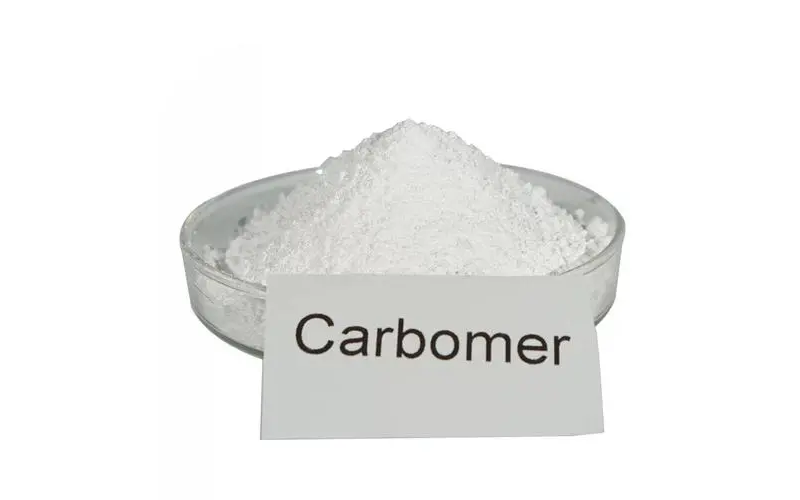
Carbomer, also known as carbopol, is a synthetic polymer derived from acrylic acid. It is primarily used as a thickening, suspending, and emulsifying agent in a wide range of personal care products and pharmaceutical formulations. Carbomers are typically supplied as white, fluffy powders that readily disperse in water to form viscous gels.
Applications in Cosmetics
In the realm of cosmetics, carbomer finds extensive use due to its ability to enhance product texture, stability, and performance. It is a key ingredient in various skincare products such as moisturizers, lotions, creams, gels, and serums. Carbomer helps to create luxurious textures, providing a smooth and silky feel upon application.
One of the primary functions of carbomer in cosmetics is its ability to thicken formulations. By increasing the viscosity of products, carbomer ensures better spreadability and adherence to the skin, enhancing their efficacy. Additionally, carbomer aids in stabilizing emulsions, preventing the separation of oil and water phases in formulations.
Furthermore, carbomer is valued for its suspending properties, which help to evenly distribute insoluble particles or ingredients within a formulation. This is particularly useful in products containing exfoliating agents, pigments, or microencapsulated actives, where uniform distribution is essential for optimal performance.

Applications in Pharmaceuticals
Beyond cosmetics, carbomer plays a crucial role in pharmaceutical formulations as well. It is widely used in topical and oral drug delivery systems for its thickening, gelling, and mucoadhesive properties. Carbomer-based gels are commonly employed in topical medications such as gels for acne treatment, wound healing, and vaginal formulations.
In oral formulations, carbomer is utilized as a thickening agent in suspensions and emulsions, enhancing their stability and palatability. Additionally, carbomer-based formulations have been explored for controlled drug release applications, where the release of the active ingredient is modulated over time to achieve prolonged therapeutic effects.

Challenges and Considerations
While carbomer offers numerous benefits, its usage is not without challenges. One of the primary considerations is its sensitivity to pH levels. Carbomers typically require a neutral or alkaline pH environment to achieve maximum thickening efficiency. Therefore, formulations containing carbomer may require pH adjustment to ensure optimal performance.
Moreover, excessive use of carbomer in formulations can lead to a sticky or tacky feel, affecting product aesthetics and user experience. Formulators must strike a balance between achieving the desired viscosity and maintaining sensory attributes.
Additionally, individuals with sensitive skin may experience irritation or allergic reactions to products containing carbomer. It is essential for manufacturers to conduct thorough safety assessments and provide appropriate labeling to inform consumers about potential allergens.
Final Note
In the realm of cosmetics and pharmaceuticals, the list of ingredients can often seem like a labyrinth of scientific jargon. Among these ingredients lies carbomer, a versatile polymer that plays a crucial role in countless products. From skincare formulations to drug delivery systems, carbomer is a ubiquitous component that deserves a closer look.
In summary, carbomer is a multifaceted ingredient that plays a pivotal role in cosmetics and pharmaceuticals. Its versatility as a thickening, suspending, and emulsifying agent makes it indispensable in a wide array of products. From skincare formulations to drug delivery systems, carbomer continues to be a cornerstone ingredient, contributing to the efficacy and stability of diverse formulations. As research and innovation in the field of materials science progress, carbomer is likely to remain a staple ingredient, continuing to shape the landscape of personal care and pharmaceutical products.
